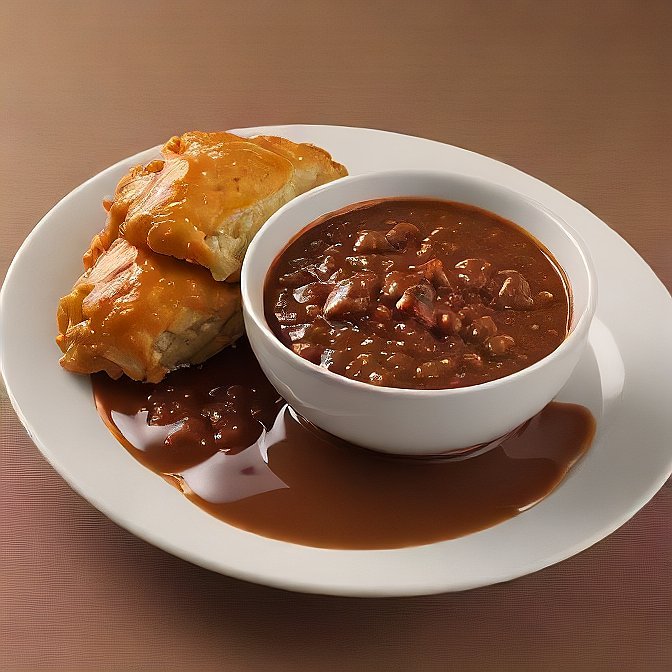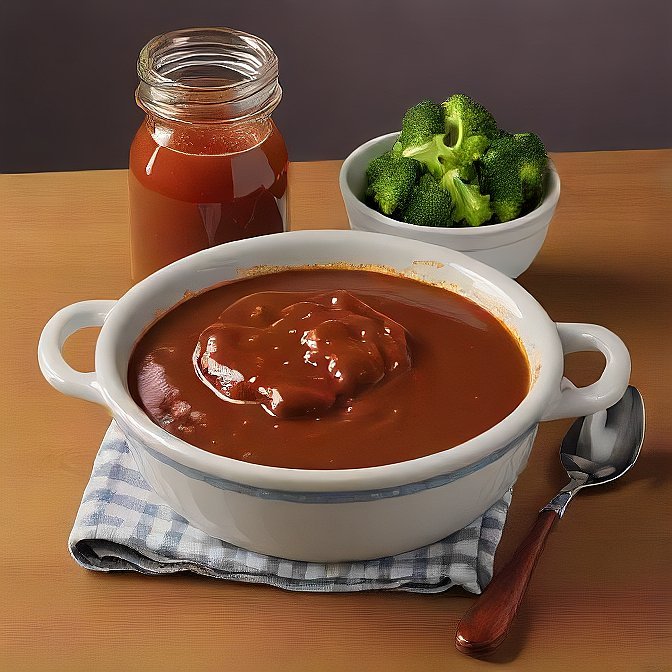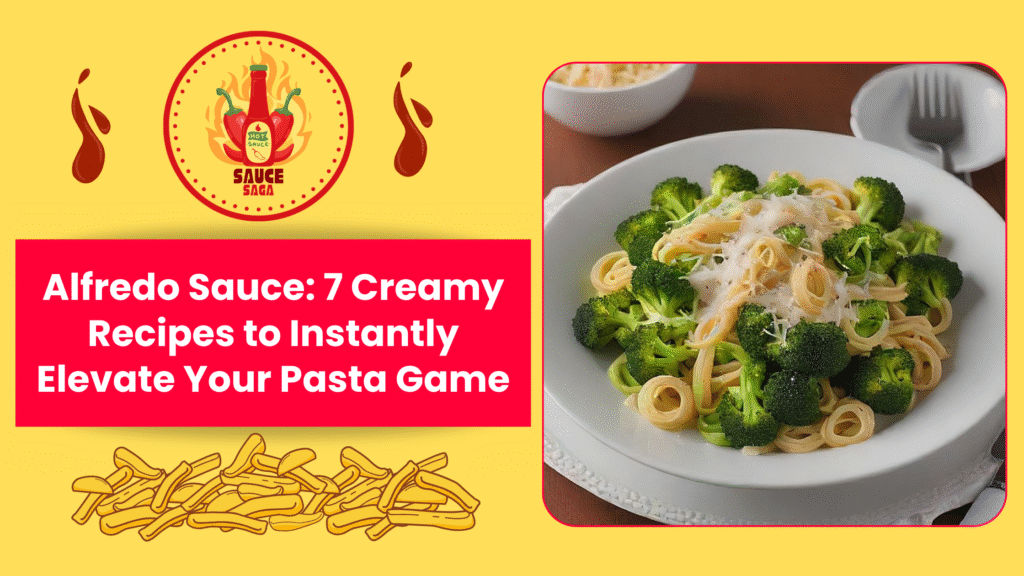Table of Contents
Introduction: Sauce and Gravy — Not Just Interchangeable Terms
Sauce and gravy refer to the same thing, but there is always a difference between these two, and professional cooks and experts in cooking know this. Gravy. The most traditional form of Gravy is made by using meat drippings thickened with flour or cornstarch and served hot on top of roasted or cooked meat. Sauce, however, is a broader term, referring to everything, including creamy bechamel and thick red wine reductions as well as fresh tomato-based pasta tops and dessert sauces.

It is not only about learning the difference in terms of knowledge. It is a matter of technique, texture, and taste. As soon as you can learn how to achieve mastery of sauce and gravy with consideration of the seven steps, you will become a different person in your kitchen.
Step 1: Know Your Base — What Sauce and Gravy Start With
To get an idea of the difference between sauce and gravy, one must first look at their fundamental ingredients.
Gravy
Gravy is normally prepared out of the juices and drippings left behind in a pan after a meat/ chicken/ even vegetables have been roasted. These are strongly flavoured drippings often added to stock, broth, or just water so as to increase the quantity. It can be thickened with a roux (fat and flour) or a cornstarch slurry.
Key components of gravy:
- Meat pan drippings
- Bone stock or stock
- Thickening agent (flour, starch, corn)
Sauce
The range of bases of sauces is more varied. The liquid base would depend on the type of sauce, but may be a broth, cream, milk, wine, or tomato puree, or even a fruit reduction. Not all sauces contain meat drippings, or can be thickened by just flour or corn starch. Sauces can be thickened by reduction, addition of eggs or butter, or emulsifying the sauce, and many more.
Common bases for sauces:
- Wine or vinegar
- Milk and cream (cheese)
- Broth or stock
- Tomato purée
- Sweet fruit, or sugar syrup (in sweet sauces)
By knowing this difference in principle, you can have the right starting point in dealing with each.
Step 2: Understand the Thickening Agents
Consistency and consistency of sauce and gravy are very important to their identity and consistency. One thing that frequently differentiates them is how they are thickened.
Gravy
Gravy virtually depends on a thickening agent that is based on flour:
- Roux: Guid portions of fat (whether in drippings or butter) and flour combined.
- Cornstarch slurry: Cornstarch plus cold water, suspended in hot liquid.
This is with the aim to attain a velvet-like texture clinging to any food, yet pours easily.
Sauce
There are several ways of thickening sauces:
- Reduction: heating the liquid until part of the water evaporates.
- Roux or beurre man: Butter and flour, a prefix mainly used in creamy sauces.
- Egg yolks or cream: Employed either in a custard or a hollandaise sauce.
- Emulsification: mixing of fat with acid (oil with vinegar or butter with egg).
- Purees or starches: Vegetables or fruits based.
The understanding of the preferred type of thickener enables one to achieve improved consistency of the sauce and gravy.
Check Out: Chocolate Sauce: 7 Decadent Recipes to Elevate Your Ice Cream.
Step 3: Cooking Method and Timing
The nature by which sauce and gravy are prepared and when they are prepared during the process of cooking also makes a difference.

Gravy
The main dish (such as a roast) is normally complete, after which gravy is prepared. It is a side effect of the cooking procedure, made out of pan drippings, frequently deglazed by liquid whilst the roast rests. It is supposed to be fast and hot.
Sauce
Depending on the type, sauces can be prepared before, during, or after the main dish is ready. Other sauces are prepared distinctly and are eaten cold, like chimichurri or romesco. Others, such as a wine reduction in red wine, can be simmered for an hour and used.
Step 4: Flavor Development and Seasoning
It is in flavor that the difference between sauce and gravy begins to make huge strides.
Gravy
Gravy is usually savoury, rich, and simple because its taste mostly depends on the meat drippings. Salt, pepper, garlic, onion, and fresh herbs are normal, but gravies have a continuous flavor profile that is based on the donning.
Sauce
Sauces are not so simple. Most sauces contain several layers of flavor, such as acids such as lemon juice or vinegar, herbs and spices, or aromatics such as garlic and shallots. Sauces tend to have a sweet and sour tendency, hotness, and fatness.
For example:
- Such a tomato sauce may contain olive oil, garlic, basil, and oregano.
- A b-chamel could include butter, flour, milk, and nutmeg.
- A teriyaki sauce may comprise soy sauce, sugar, ginger, and mirin.
The key element in creating a mastery of sauce and gravy is capturing the ability to season generously, but with thought.
Step 5: Texture and Appearance
Another important distinction between the two is texture, and understanding what to expect will make you achieve the correct final touch.
Gravy
Gravy is normal:
- Very thick, yet fluid
- Smooth or half rustic
- Smooth when done right
- It is usually brown, golden, or pale (varies according to the meat and ingredients used)
Gravy lumps are normally not what you want, unless you want to be rustic.
Sauce
The textures of sauces may range quite widely:
- Smooth and skinny (vinaigrettes)
- Thick creamy (cheese sauces)
- Silky and’ rich (wine or cream reductions)
- Tomato (or fruit compotes): chunky (sauces)
It is all about your knowledge of what your food requires and working out the methods to suit it.
Step 6: Pairing Sauce and Gravy with the Right Dish
The suitable accompaniment may go wrong or well with the food. Consumption of a sauce or gravy ought to be within the following time:
When to Use Gravy:
- Grilled or roasted meat ( turkey, beef, chicken)
- Mashed potatoes
- Meatloaf
- Biscuits (southern)
Gravy will be applicable to heart, rustic, and meat-dense meals.
When to Use Sauce:
- marinara Alfredo pesto pasta
- Sai the lemon butter, white wine sauce
- bechamel vegetables (bechamel, hollandaise) hollandaise, bechamel vegetables (bechamel, hollandaise
- Deserts ( fruit compote, chocolate sauce)
- Hollandaise, Salsa verde Eggs (hollandaise, Salsa verde)
They have a greater number of varieties in sauces, and on occasions, will make a dish complicated.
Step 7: Practice with Classic Recipes
Learning how to use sauce versus gravy simply comes to applying sauces and traditional recipes that display the difference between the two.

Classic Gravy Recipe:
Ingredients:
- 2 tablespoons pan drippings or butter
- 2 tablespoons all-purpose flour
- 2 cups beef or chicken stock
- Salt and pepper to taste
Instructions:
- Cook by dripping or melting butter in a frying pan.
- Stir flour and make a roux.
- Add stock gradually by hand whisking.
- Simmer till thick, season and serve hot.
Classic Sauce Recipe (Red Wine Reduction):
Ingredients:
- 1 cup red wine
- 1 cup beef stock
- 2 teaspoons minced shallots
- 1 tablespoon butter
- Salt and pepper to taste
Instructions:
- Cook shallots in butter until they are tender in a saucepan.
- Add wine and simmer until the liquid is reduced halfway.
- More stock and once more diminish.
- Season and strain, if liked.
Begin with these simple combinations, and then make your own combinations of pairings/flavors.
Conclusion: Sauce and Gravy Mastery Begins with Understanding the Basics
The conversation and argument of what should be examined, the sauce or the gravy, may even be more a matter of semantics, but it is most definitely relevant to the cooking process and end result flavor. The more general term is sauce, more varied, richer, and more stratified in preparation and use. Gravy is simpler, although it is a basic comfort food that is more than worth perfecting.
Reading to understand how each of these is constructed, seasoned, and presented will make you a more secure and instinctive cook. Making a gourmet wine sauce on steak or homemade gravy on pan drippings, in either case, these seven steps provide the expertise that you require to make the right accompaniment with your food.
For more info: Click Here.
FAQs
1. Is it possible to mix sauce and gravy?
Not always. Though both of them have flavor and are moist, gravy is normally the result of meat drippings, whereas sauce can be prepared out of many things, such as tomatoes, cream, or herbs. They can occasionally be substituted, but invariably with varying taste as well as texture.
2. How can a sauce or gravy be thickened in the healthiest way?
Natural thickening. You may reduce the amount of liquid in a sauce by simmering. Alternative healthier choices are to substitute in the mashed vegetables, pureed beans, or a tiny quantity of whole wheat flour or arrowroot powder, and replace heavy cream or butter.
3. What do you do with sauce or gravy that you choose not to eat?
It should be cooled and then stored in a hermetically sealed container in the fridge up to 3 to 5 days. It can be frozen and kept for as long as 2 months. The reheating process can be done in the microwave oven or on the stove; just warm it up, stirring it frequently to make it smooth.



